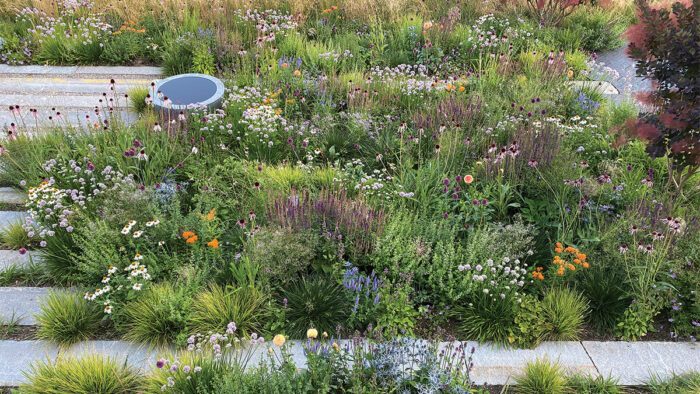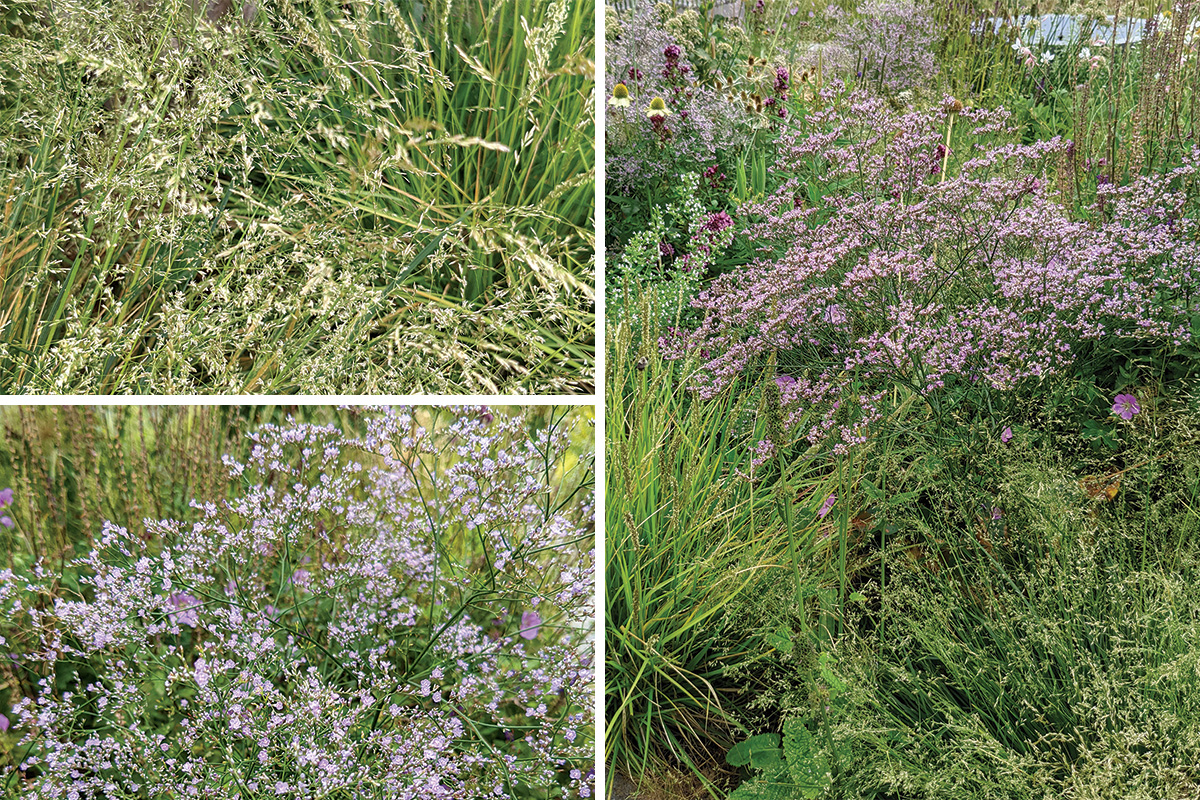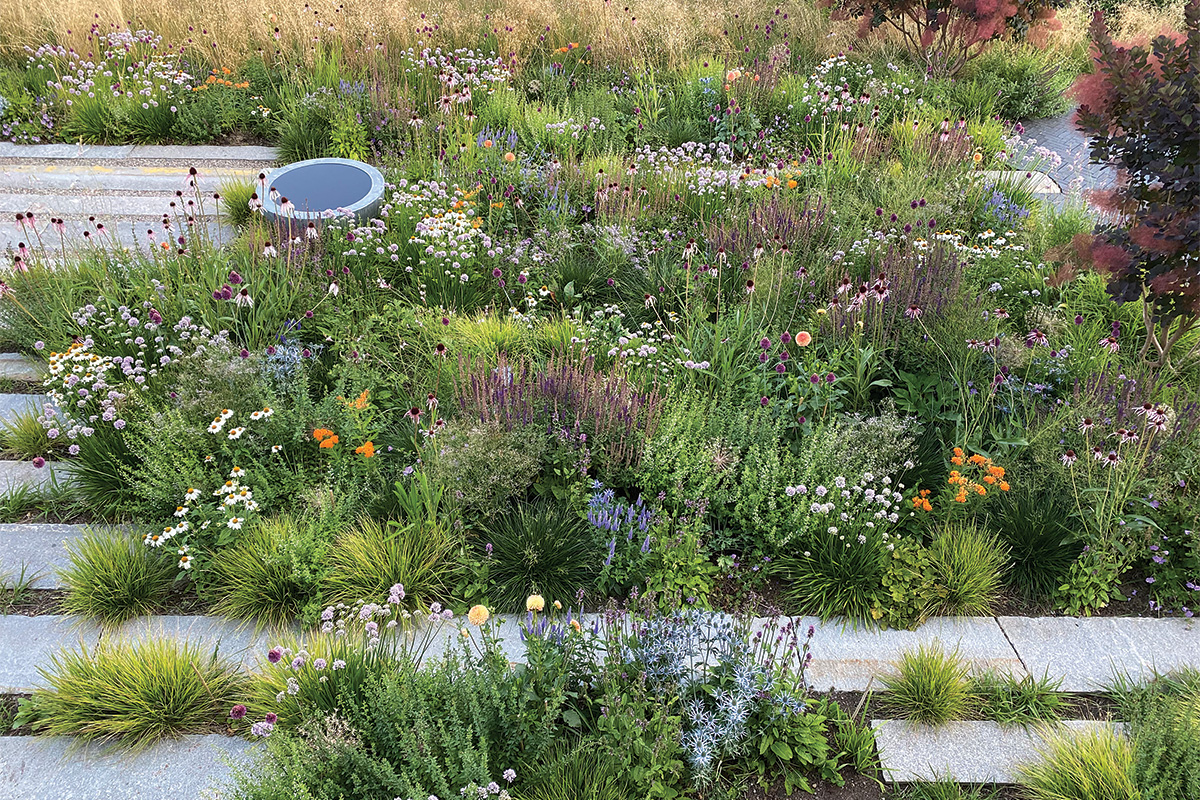
Adam Woodruff’s garden is undeniably beautiful, but it didn’t get that way by chance. What might take others decades to achieve, Adam accomplished in only a few years. A lot of planning and experimentation was involved, and he offers the following advice for three crucial points in the evolution of any garden.
1. Make a collage

To help visualize the overall composition of a new garden, Adam first creates a collage of plant photos (with similar cultural requirements) that he has collected from books, magazines, and online. In instances where he hasn’t grown a specific plant or seen it growing in a combination, he uses search image libraries. (For example, go to Google.com and search “Deschampsia AND Limonium,” then click “images” in the navigation bar. You should see many beautiful images, and from those results you can select one for your own garden-scheme collage.) Ultimately this vision board evolves into the planting plan.
2. Experiment first, buy later
In a fast-filling matrix-style garden, you’re purchasing and installing plants in large quantities. Sometimes it’s a good idea to test a plant you haven’t grown before installing it in mass. Adam forced an assortment of alliums (Allium caesium, A. sphaerocephalon, A. ‘Red Mohican’, A. tripedale, A. ‘Summer Drummer’) in containers to see when they bloomed and for how long. He was then able to determine which species performed best and, with those standouts, to play with their positioning in the garden before committing to installing a quantity.
3. Limit the size of the swaths
Grouping large numbers of the same plant can be dramatic when they’re performing well. But what happens if there is a disease or some other problem that causes one type of plant to fail? Adam favors intermingled, highly diverse matrix-style plantings (smaller groups with smaller amounts of plants). That way, if an individual species underperforms or overperforms as the garden evolves, it can easily be replaced or adjusted to bring the display back into balance.
More from Adam’s garden
Danielle Sherry is the executive editor.
Photos, except where noted: courtesy of Adam Woodruff
Fine Gardening Recommended Products

The Nature of Oaks: The Rich Ecology of Our Most Essential Native Trees
Fine Gardening receives a commission for items purchased through links on this site, including Amazon Associates and other affiliate advertising programs.

Attracting Beneficial Bugs to Your Garden, Revised and Updated Second Edition: A Natural Approach to Pest Control
Fine Gardening receives a commission for items purchased through links on this site, including Amazon Associates and other affiliate advertising programs.

A.M. Leonard Deluxe Soil Knife & Leather Sheath Combo
Fine Gardening receives a commission for items purchased through links on this site, including Amazon Associates and other affiliate advertising programs.





















Comments
Log in or create an account to post a comment.
Sign up Log in